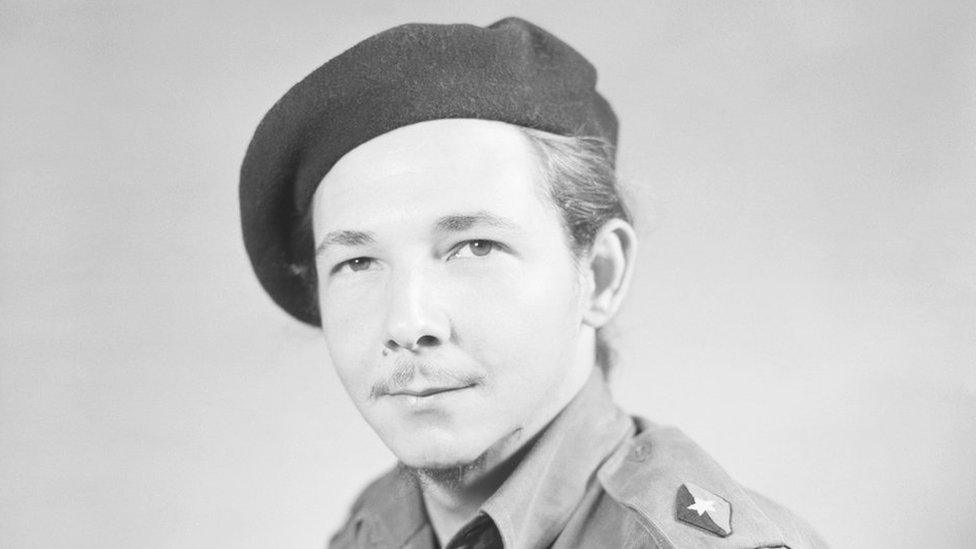In pictures: Ra煤l Castro's career over six decades
- Published

Ra煤l Castro was 27 when the revolutionaries overthrew the authoritarian regime of Fulgencio Batista.
Ra煤l Castro has stepped down as first secretary of Cuba's Communist Party.
The move means that for the first time in more than five decades, the party - which has ruled the island since the party's formation in 1965 - is not led by either Ra煤l Castro or his late brother, Fidel.
Fidel Castro led the revolution that toppled the Cuban government in 1959 and his younger brother Ra煤l was one of the commanders.
Born on 3 June 1931 and educated at a Jesuit school in the Cuban capital, Havana, Ra煤l Castro went on to study economics at university in Havana, where he joined a communist youth group.
In 1953, he helped his older brother, Fidel, plan and execute a failed attack on the Moncada military barracks in Santiago de Cuba in an attempt to oust Gen Fulgencio Batista.
He was sentenced to 13 years in prison for his part in the attack but was granted an amnesty in 1955 and went into exile in Mexico.
There, he befriended the Argentine revolutionary Ernesto "Che" Guevara and introduced him to Fidel Castro.
Ra煤l Castro and Che Guevara first met in Mexico
Ra煤l Castro returned to Cuba in December 1956 on board the ship Granma as one of his brother Fidel's group of exiles known as the 26 July Revolutionary Movement.
They conducted a guerrilla warfare campaign from the Sierra Maestra mountains which led to the overthrow of Gen Batista's government and forced Batista to flee.
A 1959 photo shows Ra煤l Castro (left) with fellow revolutionaries, including Ernesto "Che" Guevara (third from left)
Fidel Castro was sworn in as prime minister and put Ra煤l in charge of the Revolutionary Armed Forces, a post he held until 2008.
Ra煤l Castro is joined by his wife (right) and Che Guevara (left)
Whether presiding over military parades or reading to Cubans in the countryside, he could most often be seen in his olive green uniform.
The father of Fidel and Ra煤l Castro was a prosperous sugar cane farmer and Ra煤l would sometimes pose for photographs among fields of Cuba's most important crop.
In 1965, Ra煤l Castro assumed the post of second secretary of the Central Committee in the newly formed Communist Party of Cuba.
Fidel and Ra煤l Castro between them led Cuba for six decades
His older brother, Fidel, held the post of first secretary from 1965 until 2011, when he resigned and Ra煤l Castro assumed what is arguably the most influential position in Cuba.
Fidel Castro handed the reins of power over to his brother officially in 2011
While Ra煤l Castro has spent most of his life in the shadow of his brother Fidel, during his time as Cuba's president - first in an acting capacity from 2006 and later officially from 2008 to 2018 - the younger Castro not only welcomed Pope Francis to the island in 2015...
...he also shook hands with US President Barack Obama in a gesture that signalled a thaw in the relations between the two countries in 2015.
The two leaders would meet again in 2016 when Barack Obama joined Ra煤l Castro in the stands at a baseball game in Havana during the US leader's landmark trip to the Communist island.
Following the death of Fidel Castro on 25 November 2016, it fell to his younger brother to place the urn containing the ashes in his tomb at the Santa Ifigenia cemetery in Santiago de Cuba.
All pictures subject to copyright.
Related topics
- Published22 December 2019
- Published2 January 2019
- Published26 July 2018
- Published27 July 2021